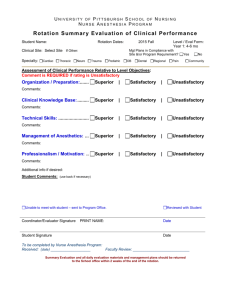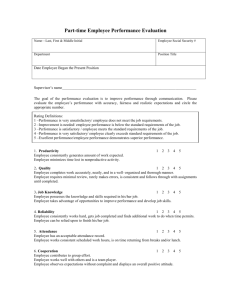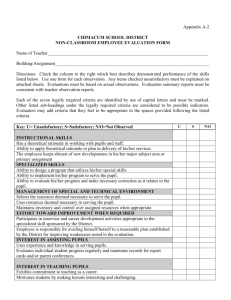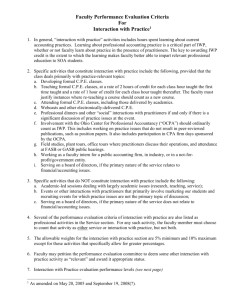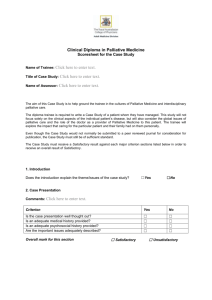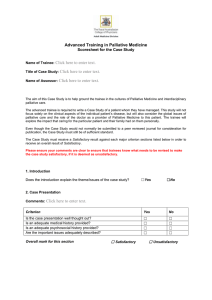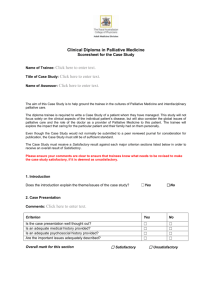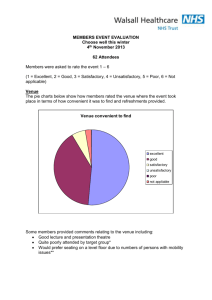Composition Rubric for TAEA
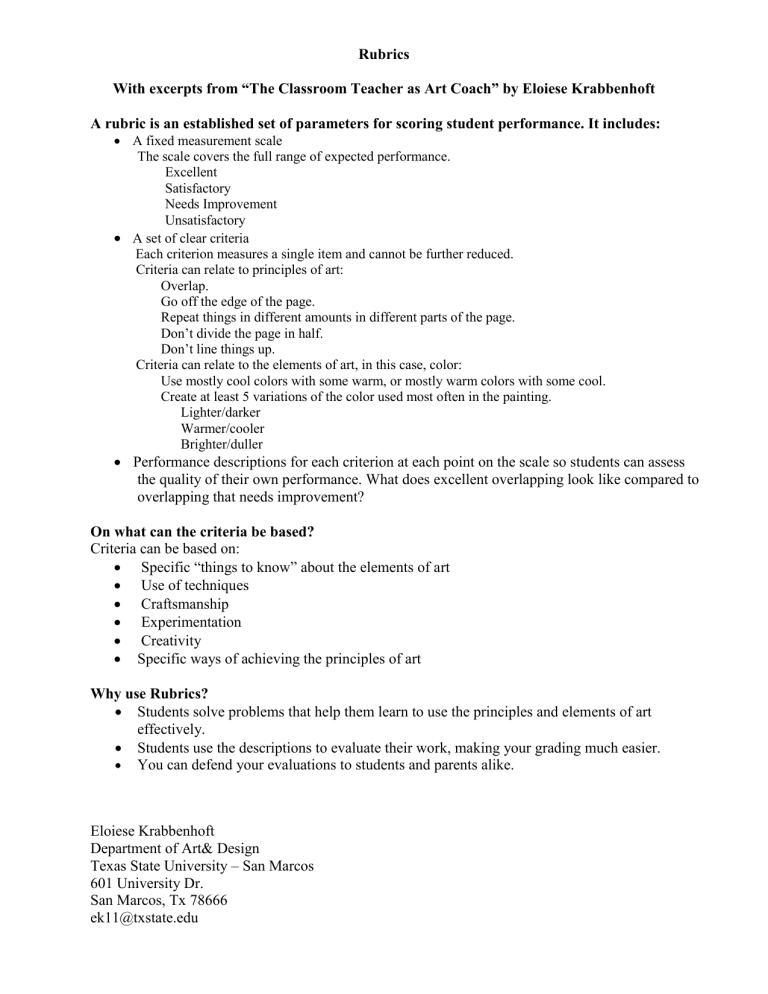
o
Rubrics
With excerpts from “The Classroom Teacher as Art Coach” by Eloiese Krabbenhoft
A rubric is an established set of parameters for scoring student performance. It includes:
A fixed measurement scale
The scale covers the full range of expected performance.
Excellent
Satisfactory
Needs Improvement
Unsatisfactory
A set of clear criteria
Each criterion measures a single item and cannot be further reduced.
Criteria can relate to principles of art:
Overlap.
Go off the edge of the page.
Repeat things in different amounts in different parts of the page.
Don’t divide the page in half.
Don’t line things up.
Criteria can relate to the elements of art, in this case, color:
Use mostly cool colors with some warm, or mostly warm colors with some cool.
Create at least 5 variations of the color used most often in the painting.
Lighter/darker
Warmer/cooler
Brighter/duller
Performance descriptions for each criterion at each point on the scale so students can assess the quality of their own performance. What does excellent overlapping look like compared to overlapping that needs improvement?
On what can the criteria be based?
Criteria can be based on:
Specific “things to know” about the elements of art
Use of techniques
Craftsmanship
Experimentation
Creativity
Specific ways of achieving the principles of art
Why use Rubrics?
Students solve problems that help them learn to use the principles and elements of art effectively.
Students use the descriptions to evaluate their work, making your grading much easier.
You can defend your evaluations to students and parents alike.
Eloiese Krabbenhoft
Department of Art& Design
Texas State University – San Marcos
601 University Dr.
San Marcos, Tx 78666 ek11@txstate.edu
D
Sample Rubric for Composition Criteria
Many of the criteria below will apply to every project you do. Choose a few that apply. Explain them to your students before they begin their projects. Then help students address the criteria and coach them to meet the criteria, or the criteria will serve no purpose.
The trick is to choose just enough criteria to help all students succeed. As you evaluate the finished projects you may identify traits of the successful work that were not addressed by the criteria you selected. So you can create appropriate criteria and add them to your lesson plans for the next time you do the project. You will know you are choosing appropriate criteria in sufficient number when the majority of your students are producing very successful work without much effort on your part. Be aware that criteria for different projects and different materials may be just the opposite of each other, so, of course, not all would be used at the same time.
Remember – criteria are to help students learn and be successful. Sometimes a student will do a brilliant work that does not meet the criteria. Sometimes work that meets the criteria may not be very attractive. Be flexible.
COMPOSITION
Grade Criterion Excellent Satisfactory Needs
Improvement
Unsatisfactory
1-8 The main object or objects are big enough but not too big so that the picture does not feel too empty or too crowded
Objects fill the page in a pleasing way.
Page is filled in a pleasing way but some areas are a little empty or a little crowded.
Objects are small but will yield a pleasing composition after cropping.
Objects are much too small. The page is at least half empty and cropping will not improve it.
Grade Criterion Excellent Satisfactory Unsatisfactory
4-8 The picture is not divided in half vertically, diagonally, or horizontally.
Divisions in the page are
1/3, 2/3.
Lines or edges do divide the page nearly in half, but it does not detract from the center of interest.
Needs
Improvement
Lines or edges divide the page in half. Few things cross the division to tie the two parts together.
Lines or edges divide the page in half.
Nothing crosses the dividing line to tie the two parts together.
Grade Criterion Excellent Satisfactory Unsatisfactory
1-8 No object is placed symmetrically in the center of the picture.
Objects are placed a little off center in a way that leaves interesting background shapes.
One object is too nearly centered but background shapes are still interesting.
Needs
Improvement
Object is centered and background is broken into shapes that are about the same size and shape
Objects are centered and the background is all one piece.
Grade Criterion Excellent Satisfactory Unsatisfactory
1-8 The edges of things do not start and stop at the same level
(horizontally, vertically or
Objects are staggered in an interesting way.
Some objects are staggered.
Some are lined up but do not detract from
Needs
Improvement
Objects are lined up but the image seems to
“work” anyway.
Objects are lined up and detract from the center of attention.
diagonally). the picture.
Grade
2-8
Criterion
Let some things go off the edge of the page.
Excellent
Objects “run” off the edge on at least two sides, but not straight across from each other.
Satisfactory
Objects “run” off the edge on at least two sides almost straight across from each other. Or - objects come close enough to the edge to create a visual tension.
Needs
Improvement
Objects “run” off the edge on only one side.
(The picture might “work” in spite of this.)
Unsatisfactory
Objects are isolated on the page and do not come near the edge.
Grade Criterion Excellent Satisfactory Unsatisfactory
2-8 Overlap objects in various places throughout the picture.
Objects are overlapped throughout the picture in a way that helps create unity.
Little overlapping is done but the picture is still unified.
Needs
Improvement
The picture needs more overlapping in order to feel unified.
Nothing overlaps.
Grade Criterion Excellent Satisfactory
1-8 Repeat shapes, values, textures, sizes, patterns, colors, etc., in different amounts in different parts of the page.
Things are repeated in different amounts, in different parts of the page so that there is balance and the viewer’s eye is led around the page.
Things are repeated in different amounts but seem to be too widely spaced and the viewer’s eye plays
“hopscotch” around the page.
Needs
Improvement
Things either are repeated in rather equal amounts or are grouped in isolated areas of the page.
Unsatisfactory
Things are not repeated.
Grade Criterion Excellent
3-8 Group objects. Objects are grouped in a staggered kind of way that helps unify the picture and lead the viewer’s eye around the page.
Satisfactory
Objects are grouped but problems include too tightly clumped, too widely spaced, or not well distributed around the page.
Needs
Improvement
Grouping happens in only one place.
Unsatisfactory
Every object is isolated. No grouping.

